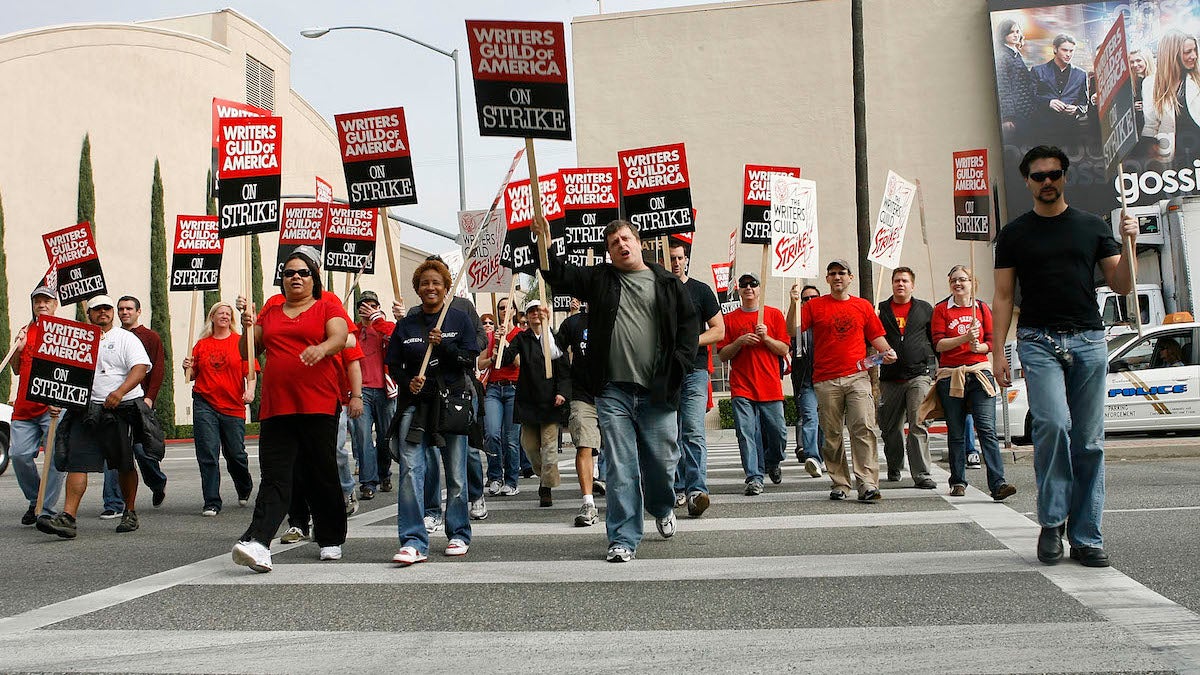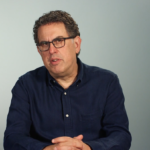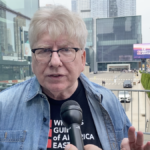
The pandemic gave studios the playbook for a long work stoppage, while WGA’s battle with agencies helped organize writers
The Writers Guild of America’s recent successful campaign to eliminate agency packaging fees also helped prepare writers to organize for a bigger battle with their employers. And the studios are running the same playbook they used to get through the pandemic to stock their streaming services with fresh shows and movies.
“In a way, we’ve been here before with the agency walkout. We weren’t on strike, but we held together for a year and a half without our agents and we won,” WGA negotiating committee member Adam Conover said. “We know from recent history that we can create big change in this industry with our collective power.”
The studios’ strategy has been telegraphed pretty clearly in press conferences and quarterly earnings calls: slow down the rate of new releases on streaming services to get through the summer. Before the strike began, Warner Bros. Discovery CEO David Zaslav told reporters at a press event for the rebranded Max streaming service, which launches Tuesday, that his studio had months of content stockpiled and that a strike wouldn’t impede Max’s debut.
“We have a lot of content that’s been produced… we are ready to go guns blazing in terms of our product and our platforms around the world,” he said.
Insiders on both sides told TheWrap that the WGA and AMPTP are extremely unlikely to even begin considering returning to the negotiating table until July, as the AMPTP must complete scheduled negotiations with the Directors Guild and SAG-AFTRA. But the studios aren’t only prepared for two or three months without writers, but have financial incentives to get through that period.
“After 90 days, the studios will be able to terminate their production deals with writers through force majeure clauses. Any deals with writers or producers that they’ve had buyer’s remorse on can be wiped clean and save them millions on production costs,” said Tom Nunan, former president of NBC Studios and UPN and producer on the Oscar-winning film “Crash.” “With what is happening on Wall Street, this strike allows entertainment companies to evaluate everything about their operations.”
Nunan, who currently works as a producing consultant and a lecturer at UCLA, also noted that unlike in 2020, when the streaming boom was just getting started, all of the streaming services run by both legacy and digital companies have a full stockpile of shows and movies that can be released at a much slower pace until the strike ends.
“When the pandemic arrived, some streaming platforms like HBO Max were just getting launched,” he said. “Now, not only are those new services established, but the executives behind them have more data and expertise on how they release their content, how they release new original titles as well as older shows and movies. They’re much more sophisticated with their own product now than they used to be and can use that in the coming months.”
So studios have their plan to get through months of picket lines. Yet WGA members say that the events of the past four years have also given them much-needed preparation.
In 2019, the WGA staged a mass walkout of Hollywood’s talent agencies to push for an end to packaging fees, a practice that the guild said provided top agencies like CAA with immense profits by allowing them to negotiate both upfront and long-term payments from studios in exchange for packaging writers, actors and other talent on major projects, but which came at the cost of writers who didn’t profit from such fees. The guild sued several major agencies over the practice that year.
While the guild faced several setbacks in court, it was ultimately successful in eliminating packaging fees by first negotiating deals with smaller agencies and then making deals with bigger ones like UTA. (It helped that the pandemic cut off the agencies’ primary revenue sources with productions shutting down.) Meanwhile, writers organized to help each other find new shows to work on without the help of talent agents by networking among themselves and using a database created by the WGA to find new writers.
Keeping the guild’s membership together during that years-long process required organizing and communication that has carried over to this strike, WGA members told TheWrap. Several writers said they were impressed with the level of communication and transparency that WGA leaders practiced during the AMPTP negotiations and the early days of the strike, with one calling it a “huge improvement” over the guild’s communication during the 2007-2008 strike.
“I was looking back at my old emails, because I remembered in 2017, we authorized a strike vote. And I was like, ‘Did I have a guild captain back then?’” said “Crazy Ex-Girlfriend” creator Rachel Bloom. “It wasn’t until 2019, though, that I got assigned another guild captain who’s actually a friend of mine. I got a lot more emails, and my emails show a record of communication that really started with the agency campaign.”
WGA leaders are already touting the success that communication has yielded in shaping the public’s perception of the strike. In communicating with members and organizing a strong start to the strike — along with encouraging members to organize among themselves and members of other Hollywood guilds to form picket lines to shut down on-location productions — support for the WGA both on the picket lines and online appears to be much stronger than for the last strike, an observation supported by the results of a recent survey performed by research firm NRG and shared with TheWrap.
“Just in terms of force, of people power, we’ve just got an extraordinarily exponentially larger number of people out this time,” WGA East President Michael Winship said.
The 2019 agency conflict may not only have provided WGA with the practice it needed to organize large picket lines, but also a potential strategy for resolving the strike. While Nunan believes that the strike will last through much if not all of the summer, he doesn’t rule out the possibility that the WGA may negotiate deals with studios on an individual basis, particularly with legacy studios.
“Once the force majeure clauses are used, and all the studios get what they needed out of all this and make their personnel decisions, many of them are going to want to get back to filming,” Nunan said. “I think at that point, the legacy studios with their broadcast networks have a lot more to lose from a strike continuing into the fall than Netflix or Apple.”
“I wouldn’t be surprised if the WGA tries picking off the studios individually at that point,” he said. “I think that all of this has been gamed out at least on the studio side, and possibly on the labor side as well.”
For all of TheWrap’s WGA strike coverage, click here.
- timewarnerent.comhttps://timewarnerent.com/author/gleberman1236/
- timewarnerent.comhttps://timewarnerent.com/author/gleberman1236/
- timewarnerent.comhttps://timewarnerent.com/author/gleberman1236/
- timewarnerent.comhttps://timewarnerent.com/author/gleberman1236/




















